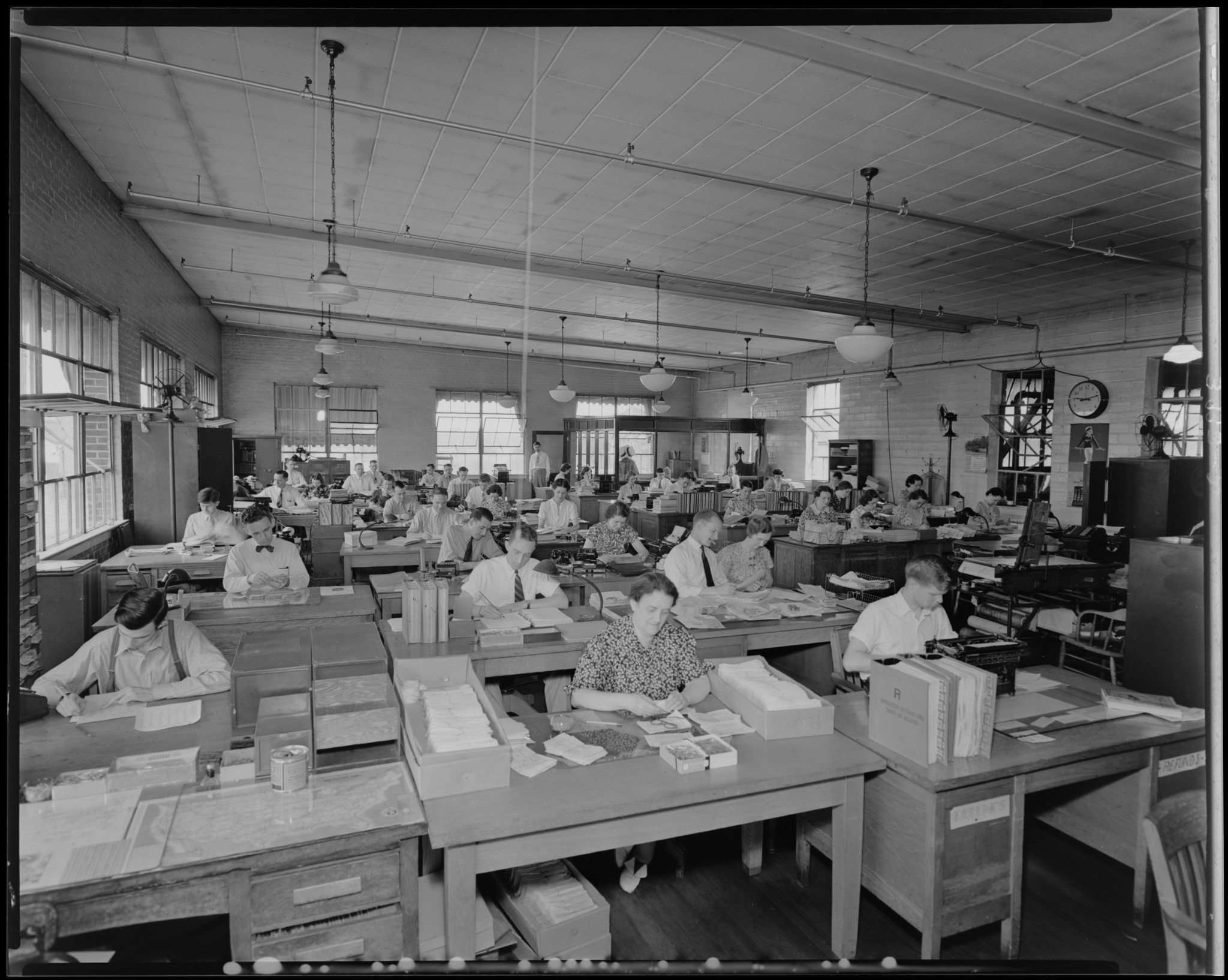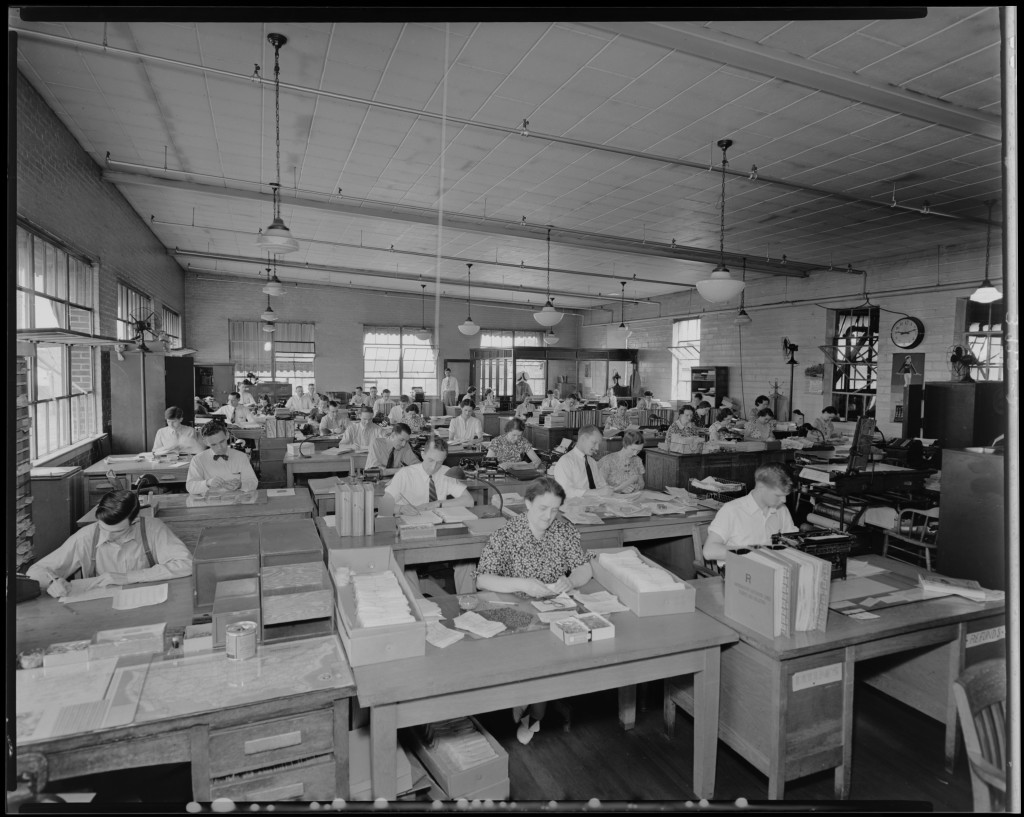In a not so recent article (Dec 2014) criticizing the open office idea as getting it wrong and ruining the workplace, the author ranted about how negatively disruptive this disruptive approach has been in her own circumstance. To that I say exactly- it’s not for everyone. Organizations are as unique as fingerprints and if companies don’t first understand the nature of the work being performed and just blindly follow a trend, well damned they should be.
 |
| Lafayette Studios photographs: 1930s decade |
The real problem for me with this trend though is that when people think of an open office, they think of the traditional 20th century workplace but with low or no walls separating people. That’s it. Remove physical barriers and viola! Innovation! Really?
This is just simply getting a good idea all wrong.
Daniel Pink, among others, makes the claim in his book Free Agent Nation, that 50% of U.S. workers will be free agents by 2020. And an Intuit 2020 report predicted a while back that traditional employment will no longer be the norm. It will be replaced by contingent workers; free-agents, part-timers, contractual. If accurate, then 2020 is only 5 years away and although those numbers seem aggressive it appears things are moving this direction. With more short-term contractual workers, employers definitely need an open office… but not the physical kind, that’s just silly. Open is practice not a space. For a person it’s an internal choice, for an organization, a group of people, being open is a cultural underpinning. Openness is sharing, open to collaborate, open to criticism and to criticize, open to contribution… from wherever you are seated. Openness, supported by collaborative technology, turns the physical office into a concept. The “office” becomes an artificial structure, no walls inside or out.
Removing cubicle walls may allow others to see the machinery but real openness, between connected people anywhere, invites them to move the levers. The open office idea today is missing the point. It’s similar to rearranging deck chairs on the Titanic, business as usual in an increasingly unusual world.


